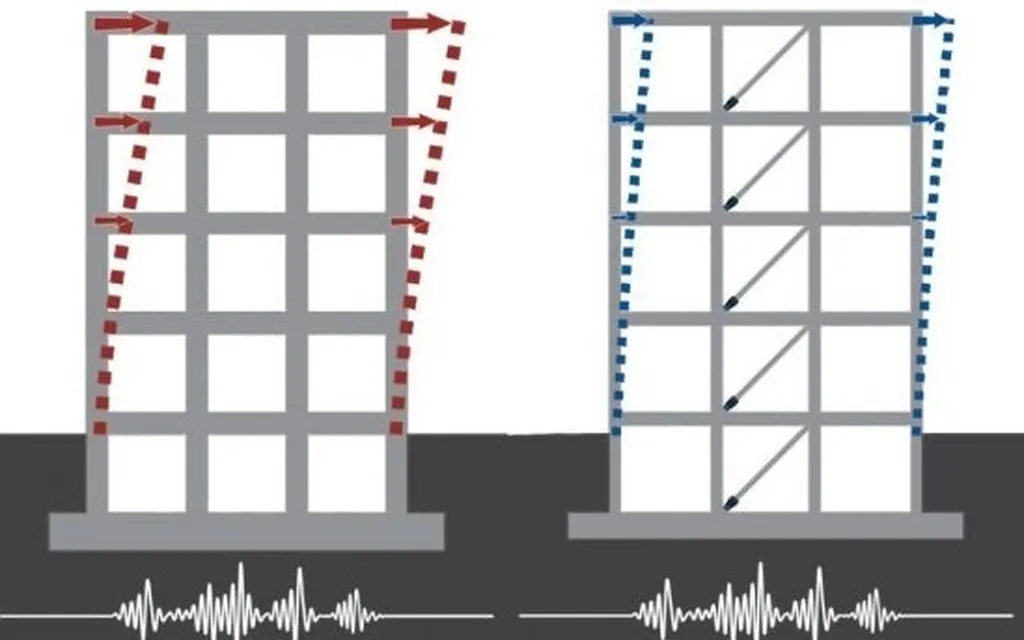In the heart of Iran, a country all too familiar with the devastating power of earthquakes, a team of engineers has developed a promising new tool to help buildings withstand seismic shocks. Mohammad Hossein Afridoon, a researcher from the Department of Civil Engineering at Razi University in Kermanshah, has led an experimental study on a novel metallic damper designed to enhance the seismic behavior of building structures. The research, published in the journal ‘مهندسی عمران شریف’ (translated as Shiraz University Journal of Civil Engineering), offers a glimpse into the future of earthquake-resistant construction.
The damper, a type of passive structural control device, is made of hourglass-shaped pins (HSP) that dissipate energy through flexural and tensile mechanisms when subjected to inelastic cyclic deformation. “The main feature of the proposed damper is the replaceable hourglass shape pins,” Afridoon explains. “These pins can be easily replaced in case of failure after severe earthquakes, making the damper a practical and cost-effective solution.”
The study involved subjecting the damper specimens to drift levels beyond the expected design ones to identify their complete behavior and all possible failure modes. The results were promising. The dampers successfully performed their function as energy absorbers and fuses in all specimens. However, the way the HSP is connected to its supporting plates greatly affects its behavior. “In the case of nut connection, a significant amount of pinching was observed in hysteresis loops,” Afridoon notes. “But welding the bars to plates seems to solve this problem, resulting in a fat and sustainable hysteresis loop without any significant strength and stiffness degradation.”
The commercial implications for the energy sector are significant. Buildings housing critical energy infrastructure, such as power plants and refineries, could greatly benefit from this technology. The dampers could help protect these facilities from earthquake damage, ensuring uninterrupted energy supply even in the aftermath of a seismic event.
The study also found that the damper is economical, easy to install, and built with no special fabrication technique. This makes it an attractive option for both new constructions and retrofitting existing buildings. The simplified analytical procedure used in the study accurately predicted the HSP behavior and was consistent with experimental results, providing a reliable method for future designs.
As the world grapples with the increasing frequency and intensity of natural disasters, innovations like Afridoon’s metallic damper offer a beacon of hope. The research not only advances our understanding of seismic behavior but also paves the way for more resilient and sustainable infrastructure. In the words of Afridoon, “This damper has the potential to greatly enhance the seismic performance of buildings, protecting lives and property in earthquake-prone regions.”

